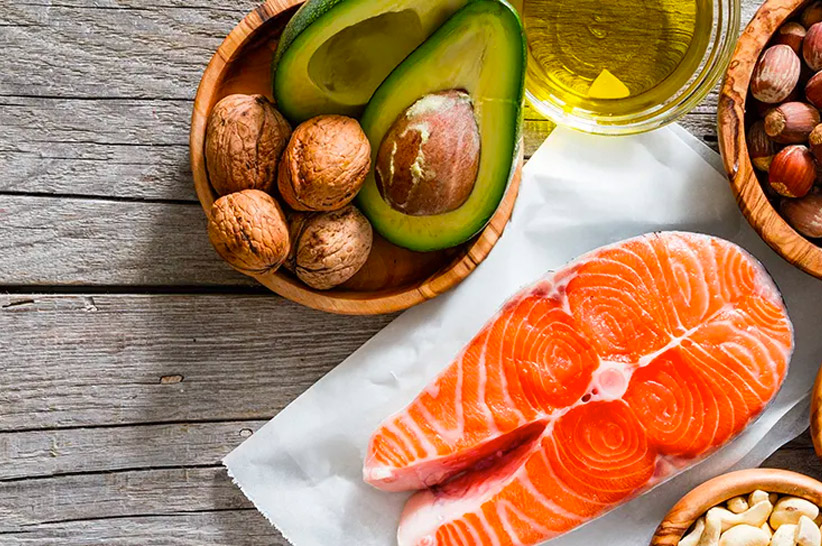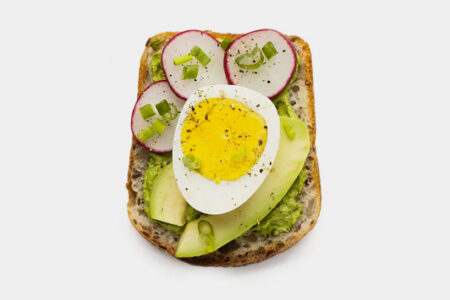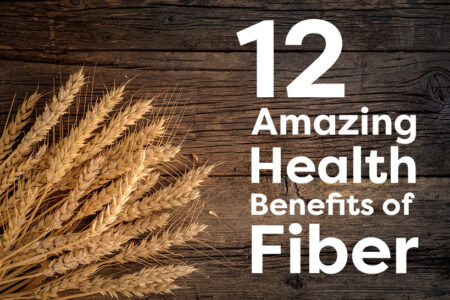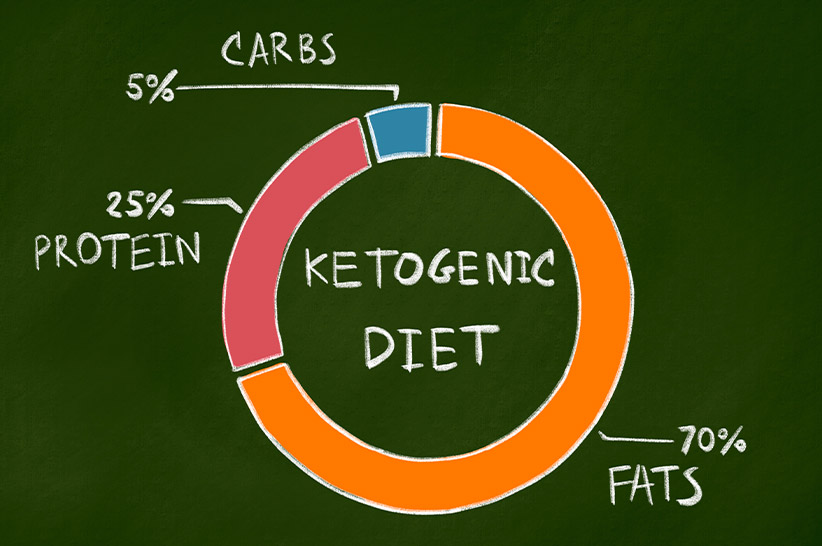Keto macros are the most important aspect of the ketogenic diet. They include the three nutrients that your body needs in large amounts– fat, protein, and carbs. Get them wrong and your chances of reaching ketosis are close to zero!
In this guide, we explain what macros are and how you can calculate your keto macros. We also offer practical bits of advice that can make meeting your keto macros a whole lot easier.
Calculating Keto Macros
The easiest way to calculate your keto macros is with a keto calculator. We’ve developed a precise keto calculator based on the standard ketogenic diet that will calculate you your keto macros in less than a minute. However, if you’d like to learn more about keto macros, including your daily allotment, keep reading.
What Are Macros?
Macros (short for “macronutrients”) are nutrients that your body needs in large amounts in order to sustain wide range of metabolic processes. Medical and nutrition experts classify the following five nutrients as macros 1:
- Carbohydrates
- Proteins
- Fats
- Fiber
- Water
However, what most people refer to when talking about macros is carbohydrates, proteins, and fats. These three are also of great importance on a ketogenic diet. They are energy-providing nutrients whose total energy yield is defined in calories.
A balance in macros is also of huge importance for overall health. Studies show that eating too much or little of a single macro increases one’s risk of obesity, heart disease, and diabetes 2. The worst offender of the three is carbs, but the one carrying the greatest stigma is fat (we’ll talk more about that later).
Besides macronutrients, your body also needs micronutrients. Micronutrients are nutrients that you need to eat in smaller amounts, and they mostly include vitamins and minerals. It’s easy to get adequate amounts of both micro and macronutrients from a well-planned ketogenic diet.
What Are Keto Macros?
“Keto macros” is a term referring to the macronutrient ratio of a ketogenic diet. This ratio looks something like this:
- 60-75% of calories from fat
- 15-30% of calories from protein
- 5-10% of calories from carbs

This macronutrient ratio is different from what the medical community recommends and from what most people are used to. In fact, The Institute of Medicine recommends that active people get 45-65% of their energy from carbs, 10-35% from protein, and 20-35% from fat 3.
So, what’s the deal here? Well, the goal of a keto diet is different from that of standard health diets. On a keto diet, your goal is to radically change the way your body uses nutrients for energy production by placing the body into a metabolic state called ketosis. The standard diet, on the other hand, is meant to optimize the way your body already makes and uses food for energy.
There are many reasons why you’d want to induce ketosis, but the most sought-after is to force your body to burn fat, instead of glucose, for fuel. When your body does this, you lose excess body fat, become more energized, and experience greater mental clarity.
Dr. Russell M. Wilder at the Mayo Clinic originally developed these standard keto macros as a treatment for childhood epilepsy 4. Decades later, this ratio is now used to achieve a variety of objectives: from weight loss and boosting energy to treating diabetes and neurological diseases.
Below is a breakdown of each macro so you can better understand their function on the keto diet:
Carbohydrates
Carbohydrates are your body’s preferred fuel source. The reason for this is that they are easy to break down and turn into energy. However, unlike proteins and fat, carbs are still not an essential nutrient.
Carbs are simply a cheap and convenient sources of energy. In the absence of carbs, your body is perfectly adapted to surviving on protein and fats. Not only that, but your body may just benefit from occasional carb restriction.
The biggest problem with carbs is that they’re easy to overconsume. The typical Western diet is laden with all of the wrong carbs, and this is believed to be behind the global rise in metabolic diseases and obesity.
Another problem with carbs is that some can cause low-grade inflammation 5, a condition linked to things like cancer and cardiovascular diseases.
The keto diet minimizes carb intake to a level that will help your body burn fat and also maintain good health.
Protein
Protein is an essential macronutrient that the body needs to build and repair tissue. Proteins are large molecules consisting of amino acids. There are around 20 amino acids in nature, 9 of which are essential for human health. You can get essential amino acids from both plant and animal foods.
On a keto diet, you have to adjust your protein intake in accordance with your activity levels: the more active you are, the more protein you’ll need. However, going overboard on protein can, and will, kick you out of ketosis because your body is able to turn a portion of the protein you eat into glucose.
On a positive note, one great thing about protein is that it keeps you feeling full for a long time because it takes longer to digest. Protein also boosts weight loss because your body actually burns calories to digest it. Finally, protein builds muscle tissue, which further increases your energy expenditure.
Fats
Fat is a central keto macro but also the reason behind much of today’s nutrition controversy. Medical experts have been warning the public about the dangers of high-fat diets for decades. The fact of the matter is that fat is an essential nutrient that your body cannot do without. Eliminating it from your diet does more harm than good, and researchers have been saying this for at least two decades now after reevaluating the role of fat in health and disease 6.
What we now know about fat is that it:
- Provides energy
- Helps your body use fat-soluble vitamins (A, D, E, and K)
- Maintains body temperature
- Maintains healthy skin and hair
- Promotes cell health
- Accumulates toxins to protect internal organs
- Supports hormone production
Fat is central to the ketogenic diet, helping the body make ketones to fuel your body and brain by replacing glucose. If you lower your calorie intake, your body will also start to use stored fat for energy.
Types of Fat
There are many different types of fat, some good and some bad.
Bad fats are trans fats found in excess in highly processed and fried food. Some margarines are also high in trans fats. Good fats are the monounsaturated and polyunsaturated fats found in plant oils. Saturated fats are also good, but some may not agree with this. Keto experts vouch for it as do many researchers and medical experts today 7.

Fats also contain essential and non-essential fatty acids. Essential fatty acids are alpha-linolenic acid (omega-3 fatty acids) and linoleic acid (omega-6 fatty acids). Your body can make other fatty acids from omega fats, but it cannot make omega fats on its own so you need to get them from food.
You can get essential fatty acids from a wide range of food sources. The best sources by far are fish, other seafood, nuts, plant oils, and seeds. Eating a variety of these foods is a foolproof way to meet your daily needs for omega fatty acids.
How to Calculate Macros for Keto
Keto macros are roughly the same for your most people. However, for maximum efficiency, you want keto macros to match your physique, needs, and goals. The easiest way to do that is by using a keto calculator.
However, there are other ways to calculate and keep track of your keto macros:
1. Start with net carbs
Net carbs are total carbs minus fiber. Calculating them is important on a keto diet because your body makes glucose only from net carbs. Fiber has no effect on your blood glucose levels whatsoever, so feel free to load up on it.
Take a look at nutrition labels on food packaging or online for fresh produce. MyFitnessPall and SELFNutritionData have great nutrition databases for this purpose. When you find the total carbs, subtract the fiber and what you get is net carbs.
Your daily intake of net carbs should not exceed 30 grams. This is the upper limit you can reach before being kicked out of ketosis. However, eating around 20 grams a day is optimal for most people. Athletes may need to eat more to have enough energy during workouts.
2. Move on to proteins
Your protein allowance on a keto diet will depend on whether you want to build muscle, lose weight, and your body fat percentage*. As a rule of thumb, you need around 1.5 to 2.5 grams of protein per kilogram of muscle mass to maintain or gain muscle**. That’s 0.7 to 1 grams of protein per pound of muscle mass. You will need less if you are not trying to gain muscle. Below is a formula to help you determine your daily protein allowance.
1. Start by calculating your body fat by using the following formula*** (the example provided is for someone weighing 160 pounds with a 20 % body fat percentage):
160 pounds x 0.20 (20 %) = 32 pounds of body fat
2. Subtract your body fat percentage from 100 to get your lean muscle mass percentage:
100 – 20 percent (of body fat) = 80% of muscle mass.
3. Then divide this by 100 to get the decimal for your muscle weight:
80 / 100 = 0.80
4. Finally, multiply this decimal by total weight to calculate your total lean mass weight:
160 (pounds) x 0.80 = 128 of lean mass
5. To calculate your daily protein allowance, simply multiply your muscle mass by gram of protein. The formula goes like this:
128 pounds (of muscle mass) x 0.7-1 grams (protein per pound of muscle mass) = 89-128 grams of protein
Note:
- To determine your body fat percentage, you can use the visual representation provided in our keto calculator. Other options include a body fat scale or a skinfold caliper.
- An easier way to calculate your daily protein needs is simply relying on the recomended 0.8g per kg of total body weight (0.36g per pound of body weight). However, this formula works best for the average (nonathlete) person.
- Your body percentage estimate can help you determine how much weight you want to lose.
3. Finish with fats
After you’ve determined your daily carb and protein allowance, you’ll have to calculate how much fat you should eat. This will depend on whether you want to lose or maintain weight. To maintain weight, you need to eat more fat than to lose weight.
The easiest way to calculate your daily fat allowance is, of course, by using a keto calculator. The calculator will provide you with your daily allowance of fat in grams. If you want to know how many calories you are taking in, consider the following facts:
- Protein and carbohydrates contain 4 calories per gram
- Fat contains 9 calories per gram.
This means that if, say, a keto (macros) calculator shows you need to eat 200 grams of fat that 1,800 of your daily calories should come from fat:
200 grams (of fat) x 9 calories (per gram) = 1,800 calories from fat
On average, women need to eat around 2,000 and men around 2,500 calories per day. But these numbers vary greatly depending on your age, weight, and physical activity levels along with your goals (if you’re trying to lose weight or gain muscle mass).
A surplus of 500 calories will either help you maintain muscle mass or total weight, while a deficiency will help you lose body fat. However, we need to mention that many keto experts doubt the necessity of counting calories on a keto diet. The reason being that fat is highly satiating, so going overboard is difficult. Another reason is that the ketogenic diet in itself suppresses appetite 8 but also has a strong thermic effect.
How to Calculate Food Macros
You know that some foods are high in fat and low in carbs, while others are the exact opposite (think avocado vs. white rice). But that doesn’t really help you on a practical level. You want to know how many keto macros you’re taking in with your meals.
Calculating keto macros in food items as well as whole meals is pretty easy. However, we need to warn you that it can be time-consuming when you first start doing this. Nevertheless, calculating macros is an important step in getting your ratio just right. You can do this by using nutrition facts from reliable websites.
Take for example Myfitnesspal.com. The website offers nutrition facts for a wide range of food items. Simply enter a food item in the search bar and the website will give you precise nutrition facts per serving, including total fat, total carbs, dietary fiber, protein, and calories.
Besides Myfitnesspal.com, you can use our food list of keto-approved foods and visit our Foods & Nutrition Blogs to learn more about keto foods. Once you have a list of keto foods ready, use nutrition facts websites to calculate your keto macros.
Example:
1 medium avocado (250 calories)
- Fat: 23 grams
- Net carbs: 5 grams (15 grams total carbs – 10 grams fiber),
- Protein: 0 grams
Served with one poached egg (74 calories)
- Fat: 5 grams
- Net carbs: 0 grams
- Protein: 6 grams
Topped with a teaspoon of olive oil (40 calories)
- Fat: 5 grams
- Net carbs: 0 grams
- Protein: 0 grams
From this 364-calorie meal, you get a total of 33 grams of fat, 5 grams of net carbs, and 6 grams of protein. Make similar lists for all your meals and keep them close when you plan your meals.
Tips & Tricks for Meeting Macros
Stick to whole foods
Highly processed foods contain hidden ingredients that can sabotage your dieting efforts. In other words, you never know what you are taking in when munching on packaged foods labeled “low-carb” or “keto”. The keto diet is all about clean eating as this supports good health, and most importantly – helps you stay within your keto macros.
Plan your meals
Planning meals is non-negotiable on a keto diet. You simply can’t make food choices on spur of the moment because then you won’t be able to track your keto macros. Planning meals is time-consuming at first. But once you have your list ready, most of your planning is already done.
Join a keto community
The keto diet can be confusing for newcomers. To make the transition easier, consider joining online keto communities to learn about other’s experiences. Facebook and Reddit have great keto communities where dieters also discuss how they meet their keto macros – give it a try and see if you can learn from others’ experiences.
Find a ready-made meal plan
An even easier way to meet your keto macros is to use existing meal plans. Many keto websites offer weekly, monthly, and even half-year meal plans. This takes away much of the hassle that you initial go through when trying to plan meals and meet keto macros. Make sure you only use meal plans from reputable sources with good ratings.
Takeaways
Keto macros are the essence of a ketogenic diet. You want to balance them out perfectly to reach your goals and feel good along the way. This can be a bit tricky as it involves plenty of planning and mathematics.
But once you have your macros set and your meal plan in place, keto dieting will become your second nature. Use our keto calculator, read our informative blog posts, and consider our guidance and tips given here when trying to meet your macros.
And also, don’t worry if you don’t get your keto macros perfect the first time. As long as you are eating less than 30 grams of carbs per day and lots of fat, chances are your diet will work like a charm.
Make sure you also measure your ketones levels with your favorite device, be it a breathalyzer, a blood ketone meter or our ketone strips.
After all, the keto diet is a lifestyle you’re supposed to enjoy. Make meeting your macros an exciting challenge and your keto meals as delicious and decadent as they should be.










![Juicing for Weight Loss: Everything You Need to Know [Plus Recipes]](/wp-content/uploads/2019/08/Juicing-for-Weight-featured-image.jpg)








